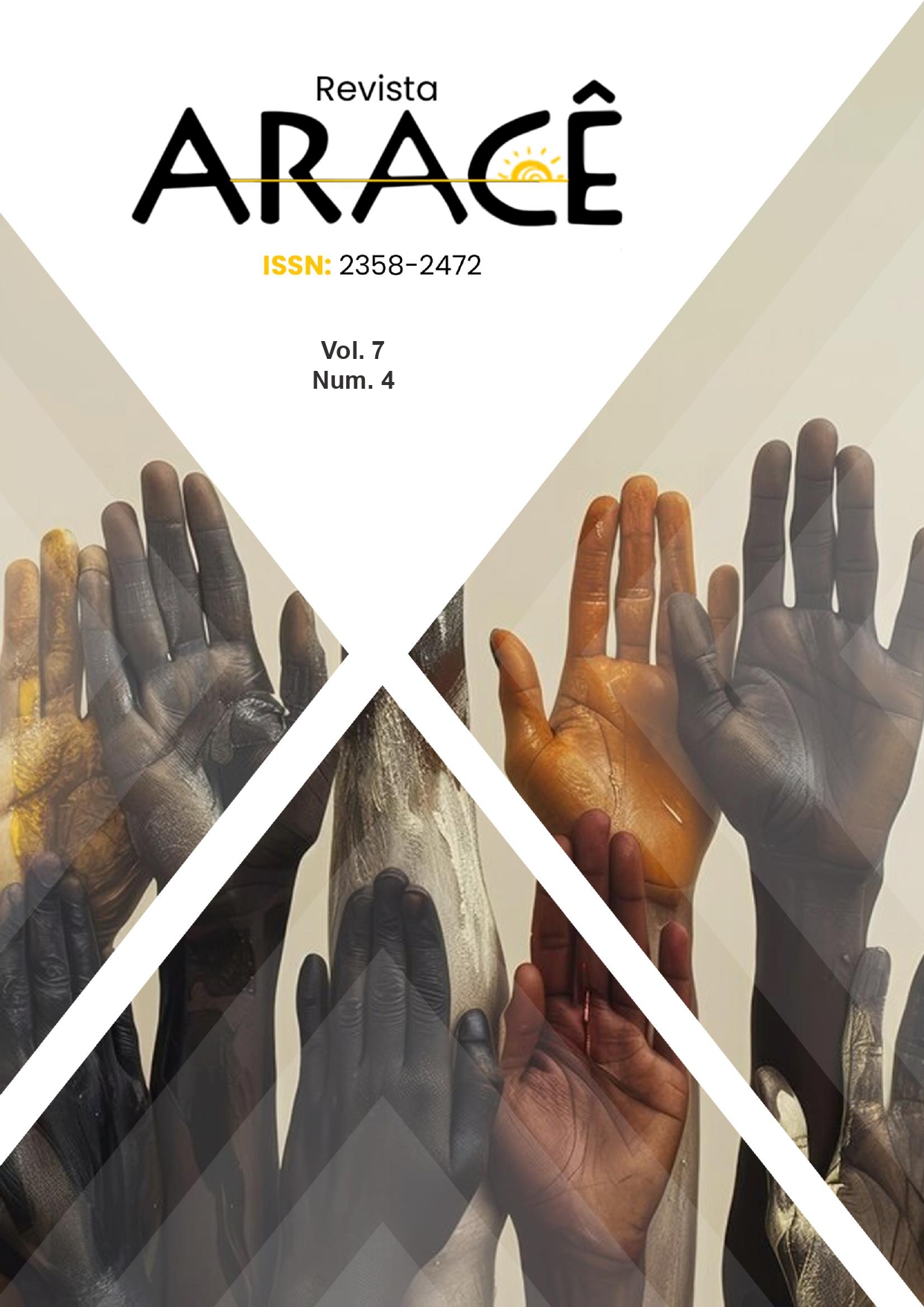POLÍTICA EDUCACIONAL E BRANQUITUDE – A PRESENÇA-AUSÊNCIA DO NEGRO E DA EDUCAÇÃO ANTIRRACISTA NAS REFORMAS EDUCACIONAIS
DOI:
https://doi.org/10.56238/arev7n4-242Palavras-chave:
Educação Antirracista, Reforma Educacional, Invisibilidade Estrutural, BranquitudeResumo
Embora o discurso oficial sobre equidade racial tenha ganhado espaço nas últimas décadas, a política educacional brasileira ainda revela, de forma persistente, um padrão estrutural de invisibilização da população negra. Nesse contexto, o presente artigo investiga como a branquitude opera silenciosamente nas reformas educacionais, naturalizando a ausência do negro como sujeito epistêmico e despolitizando a proposta de uma educação antirracista. Ainda que legislações como a Lei 10.639/2003 representem marcos importantes, é notável que sua implementação, em muitos casos, se dilui nas entrelinhas dos currículos, dos documentos oficiais e das políticas formativas, que seguem centradas em uma lógica eurocêntrica e monocultural. Diante disso, propomos como objeto de estudo a análise crítica das reformas educacionais recentes no Brasil, com ênfase nas formas pelas quais essas políticas reforçam ou silenciam a centralidade do enfrentamento ao racismo estrutural nas escolas. Partimos do pressuposto de que a branquitude não se apresenta apenas como ausência do outro, mas como presença ativa de um projeto que exclui, normatiza e legitima determinadas formas de saber, existência e pertencimento. A partir dessa reflexão, a pergunta de partida que orienta a pesquisa é: de que maneira a branquitude tem moldado as reformas educacionais brasileiras, afetando a presença da população negra e o avanço de uma educação antirracista no país? Teoricamente, fizemos uso dos trabalhos de Almeida (2019), Bento (2022), Billings (2009), Brookfield (2019), Casey (2020), Dabiri (2021), DiAngelo (2018), Dijk (2020), Fanon (2008), hooks (2013; 2019), Husband (2016), Ignatiev (1995), Kendi (2019), Ladson (2009), McManimon (2020), Rankine (2022), Ribeiro (2019), Saviani (2018; 2021), Schwarcz (1993; 2019; 2022; 2024), Stephen (2019), Van Dijk (2020), entre outros. A pesquisa é de cunho qualitativa a partir de Minayo (2007), descritiva e bibliográfica conforme Gil (2008) e com o viés analítico compreensivo de Weber (1949). A pesquisa revelou que, embora os discursos de diversidade e inclusão estejam cada vez mais presentes nos marcos legais educacionais, a branquitude continua operando como estrutura normativa silenciosa que esvazia a potência crítica da educação antirracista. As reformas educacionais mantêm uma lógica eurocêntrica, que marginaliza a presença negra e impede a ruptura com padrões excludentes. Verificou-se que a diversidade é frequentemente tratada como retórica apaziguadora, enquanto o enfrentamento ao racismo estrutural é evitado ou diluído. Além disso, observou-se a “ausência” da branquitude como categoria analítica nos documentos, o que contribui para a manutenção de seu poder epistêmico invisível.





